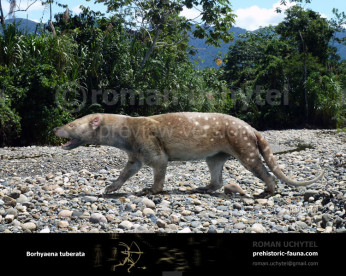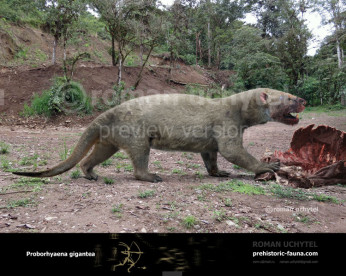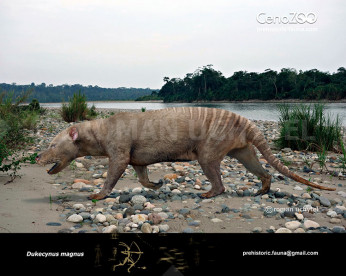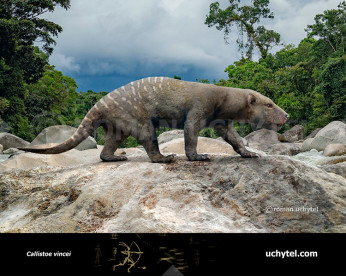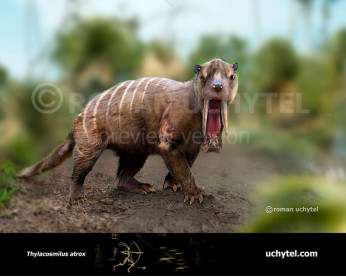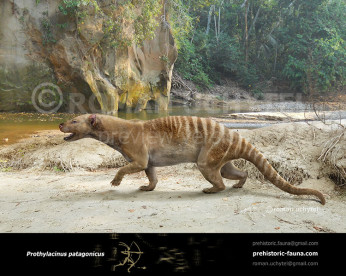Arminiheringia
0707Arminiheringia (Arminiheringia Ameghino, 1902)
Synonyms: Dilestes dilobus
Infraclass: Metatheria
Order: †Sparassodonta
Superfamily: †Borhyaenoidea
Family: †Proborhyaenidae
Dimensions: length - 1,4 m, height - 60 сm, weight - 40-80 kg
Temporal range: Eocene in South America
Proborhyaenidae is an extinct family of metatherians mammals of the order Sparassodonta, which lived in South America since the Eocene (Casamayoran) until the Oligocene (Deseadan). Sometimes it have been included as a subfamily of their relatives borhyaenids (as Proborhyaeninae). Members of this family were carnivores, usually large, being among the largest representatives of the sparassodonts and carnivore metatherians; the species Proborhyaena gigantea could reach 600 kg, a size comparable to the bears.
The proborhyaenids were characterized by a large and massive skull with molars specialized in meat consumption (carnassials) and their canines lacked of teeth enamel in preserved specimens; probably it have been very thin or restricted to the tips in life. In the genus Aminiheringia the lower canines are also protudring. These teeth, as in the thylacosmilids had an open root even as adults, so that these teeth could grow continuously. This feature was suggested as evidence of their close kinship with Thylacosmilus, but this hypothesis has been ruled out.
Arminiheringia (Arminiheringia Ameghino, 1902)
Synonyms: Dilestes dilobus
Infraclass: Metatheria
Order: †Sparassodonta
Superfamily: †Borhyaenoidea
Family: †Proborhyaenidae
Dimensions: length - 1,4 m, height - 60 сm, weight - 40-80 kg
Temporal range: Eocene in South America
Proborhyaenidae is an extinct family of metatherians mammals of the order Sparassodonta, which lived in South America since the Eocene (Casamayoran) until the Oligocene (Deseadan). Sometimes it have been included as a subfamily of their relatives borhyaenids (as Proborhyaeninae). Members of this family were carnivores, usually large, being among the largest representatives of the sparassodonts and carnivore metatherians; the species Proborhyaena gigantea could reach 600 kg, a size comparable to the bears.
The proborhyaenids were characterized by a large and massive skull with molars specialized in meat consumption (carnassials) and their canines lacked of teeth enamel in preserved specimens; probably it have been very thin or restricted to the tips in life. In the genus Aminiheringia the lower canines are also protudring. These teeth, as in the thylacosmilids had an open root even as adults, so that these teeth could grow continuously. This feature was suggested as evidence of their close kinship with Thylacosmilus, but this hypothesis has been ruled out.

-797x638.jpg)
3-797x638.jpg)
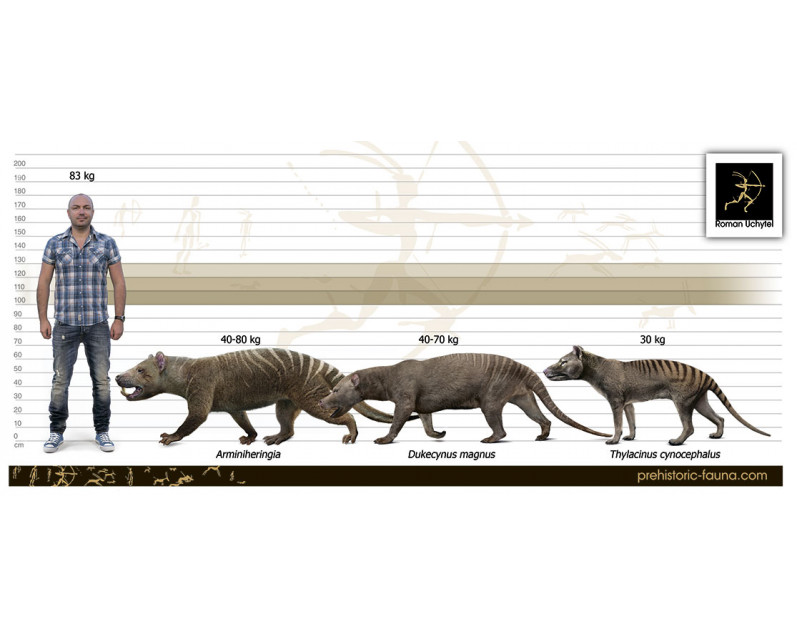
-70x56.jpg)
3-70x56.jpg)

